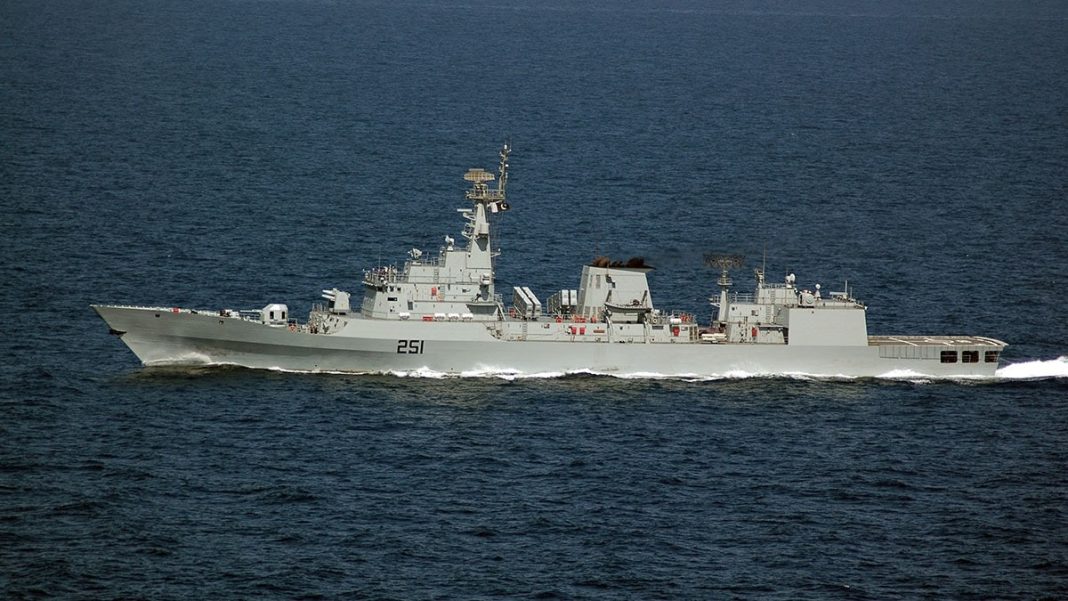Navy Day, celebrated annually on December 4 since 1972, marks a significant moment in India’s maritime history, honoring the Indian Navy’s triumphs during the 1971 war with Pakistan. On this day, the Indian Navy executed a daring missile boat strike on Karachi, inflicting considerable damage to the Pakistan Navy and setting a precedent for naval operations in the region.
As this Navy Day approaches, there is rising concern over the rapid modernization of Pakistan’s navy, significantly aided by its partnership with China. The ambition of Pakistan to develop a formidable naval fleet of 50 ships, along with enhanced underwater and surface combat capabilities, poses new challenges to the maritime balance in South Asia.
Indian Navy Chief Admiral Dinesh K. Tripathi addressed these concerns on December 2, emphasizing the alarming growth of the Pakistan Navy, which seeks to augment its capabilities with advanced weaponry despite prioritizing military expenditures over societal welfare. He highlighted that Pakistan is bolstering its naval strength with comprehensive support from China, including the procurement of eight new submarines, which exhibit notable combat potential.
In 2015, Pakistan formalized a $5 billion agreement with China for the acquisition of eight Hangor-class submarines, which are an export variant of the Type 039A/041 Yuan-class submarines boasting air-independent propulsion. This arrangement includes the construction of four submarines in China, with subsequent assembly of the remaining vessels occurring at the Karachi Shipyard and Engineering Works (KSEW). The launch of the first submarine in April this year marked a significant milestone in Beijing’s pivotal role in enhancing Pakistan’s maritime capabilities.
Furthermore, Pakistan is set to receive two additional Type 054 A/P frigates from China. These frigates come equipped with sophisticated systems, such as the HHQ-16 surface-to-air missiles and CM-401 supersonic anti-ship missiles, which significantly bolster Pakistan’s surface-combat prowess. In addition, the conversion of two Embraer Lineage 1000 jets into maritime patrol aircraft, equipped with advanced sensors and weaponry, further expands Pakistan’s surveillance and strike capabilities.
Experts suggest that China’s proactive involvement in the naval modernization of Pakistan is part of a broader strategy aimed at countering India’s influence in the Indian Ocean Region (IOR). The acquisition of the Hangor-class submarines and advanced frigates is seen as a step towards enhancing Pakistan’s operational capabilities in contested waters, thereby posing a potential challenge to India’s longstanding naval superiority.
With concerns mounting regarding the stealth capabilities of the Hangor-class submarines, Indian naval strategists are revising their operational doctrines to counter emerging threats from the region. In response to Pakistan’s military advancements, the Indian Navy is prioritizing its indigenous shipbuilding programs, fast-tracking innovative projects, including the P-75I submarines, equipped with advanced air-independent propulsion technology, as well as commissioning new surface combatants like the Vishakhapatnam-class destroyers and Nilgiri-class frigates.
Currently, a substantial number of vessels, including 62 ships and one submarine, are under construction in India, reflecting the Navy’s commitment to enhancing its maritime capabilities. Admiral Tripathi confirmed that several platforms are set to be inducted into the Navy in the coming year, with focused efforts being made to integrate niche technologies into the force.
These developments take place amid growing global interest in the Indo-Pacific region. Key partners such as the United States, Japan, and Australia, who form part of the Quad, are increasingly collaborating with India to uphold a free and open Indo-Pacific. Joint maritime exercises, like the Malabar exercises, are integral to these partnerships, fostering interoperability and enhancing collective capabilities to counter Chinese assertiveness.
While the Indian Navy continues to be the dominant maritime force in South Asia, Pakistan’s accelerated naval build-up, with Chinese backing, signals a formidable challenge to India’s regional supremacy. As Navy Day approaches, this historical celebration not only reflects on past victories but also underscores the importance of adapting to evolving maritime challenges in a rapidly changing geopolitical landscape.





